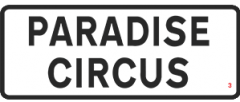In an old episode of BBC science programme The Infinite Monkey Cage the astrophysicist Neil deGrasse Tyson described how as a young boy growing up in New York City he never saw the stars in the night sky; in a city, when you look up you just see more city. When he eventually saw the wonder of the stars it was in the New York planetarium. That was where he found his love of science, and that was how his life’s work in cosmology began.
Tyson is quite the poetic scientist, and I found his story captivating. The city exists, he seems to suggest, only between its highest penthouses and the ground below them — all the sky above is lost.
Of course New York is a very different cityscape to Birmingham, but there’s something in what he tells us about wonder, about knowledge and enquiry, that is relevant to us.
Our skyline thrusts ever upwards, fuelled by the speculative construction of inner city apartments. Meanwhile the social housing of the past is being brought back to the ground. The clear message here is that the vista of the city is a reward for success, in the starkest capitalist terms. This tells us that only winners are now allowed to look down upon the mighty work of Birmingham. Perhaps they are able to see the sky from up there too. Perhaps they can wonder at the wandering stars; for them they are reserved.
What Birmingham lacks in height it makes up for in light. The modern city, even a modestly risen one like ours, still beats back at the night sky with a haze of halogen. Part of the deal with cities is that, though they may rob you of nature’s riches, they give back to you what you need for an enriched life. They do this through civic works, as New York did for Tyson when it gave him the wonder of stars through the planetarium.
In BMAG today they exhibit a model of one of many master plans for what is now Centenary Square. The classical architecture of Baskerville House and the Hall of Memory are mirrored by sympathetically designed buildings. The Hall of Memory’s twin is a planetarium. In that square today you will find the new Library of Birmingham.
A library, like a planetarium, is a place of wonders, a place to enrich our lives and light the sparks of promise in us all. A library can unlock the mysteries of the sky above us, too.
The deal is the city takes the natural world from us but gives it back to us in some way so we too can wander through it and wonder; the building itself isn’t the wondrous thing.
The library at night is lit up like a galaxy of the stars it obliterates from view. Tonight perhaps it’s lit in a regal purple? Look upon it and despair and wonder what’s inside.







